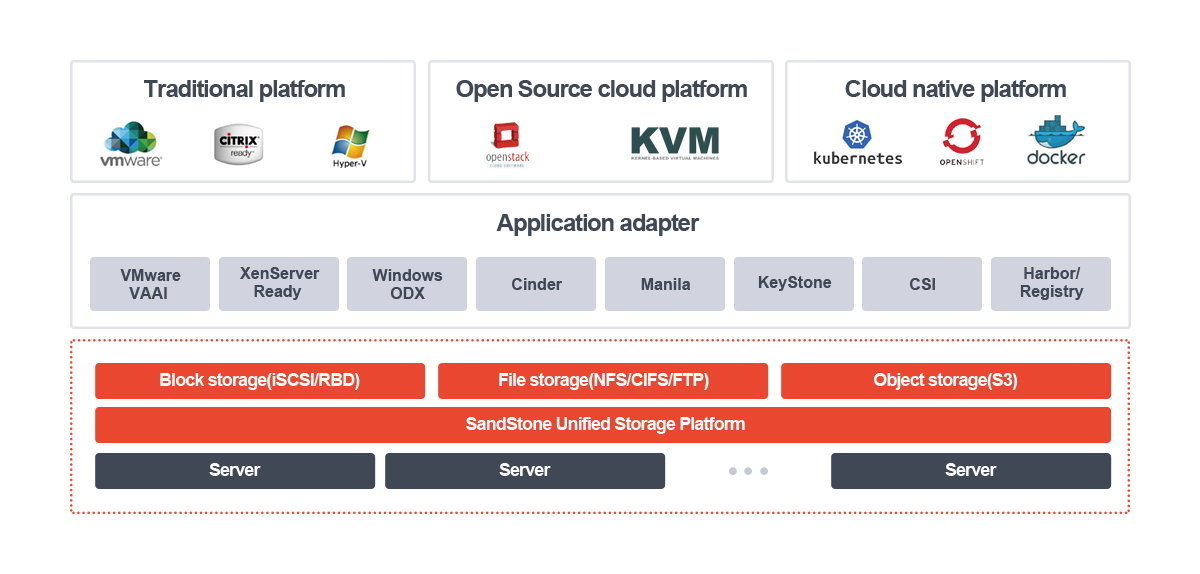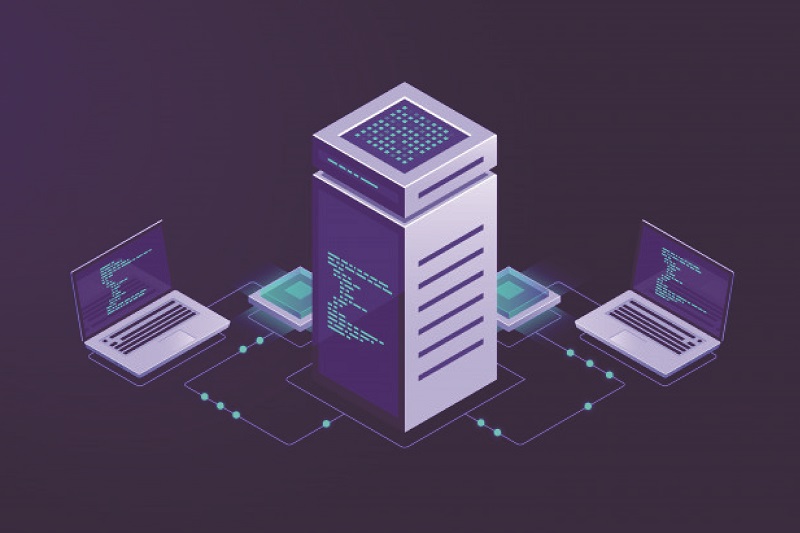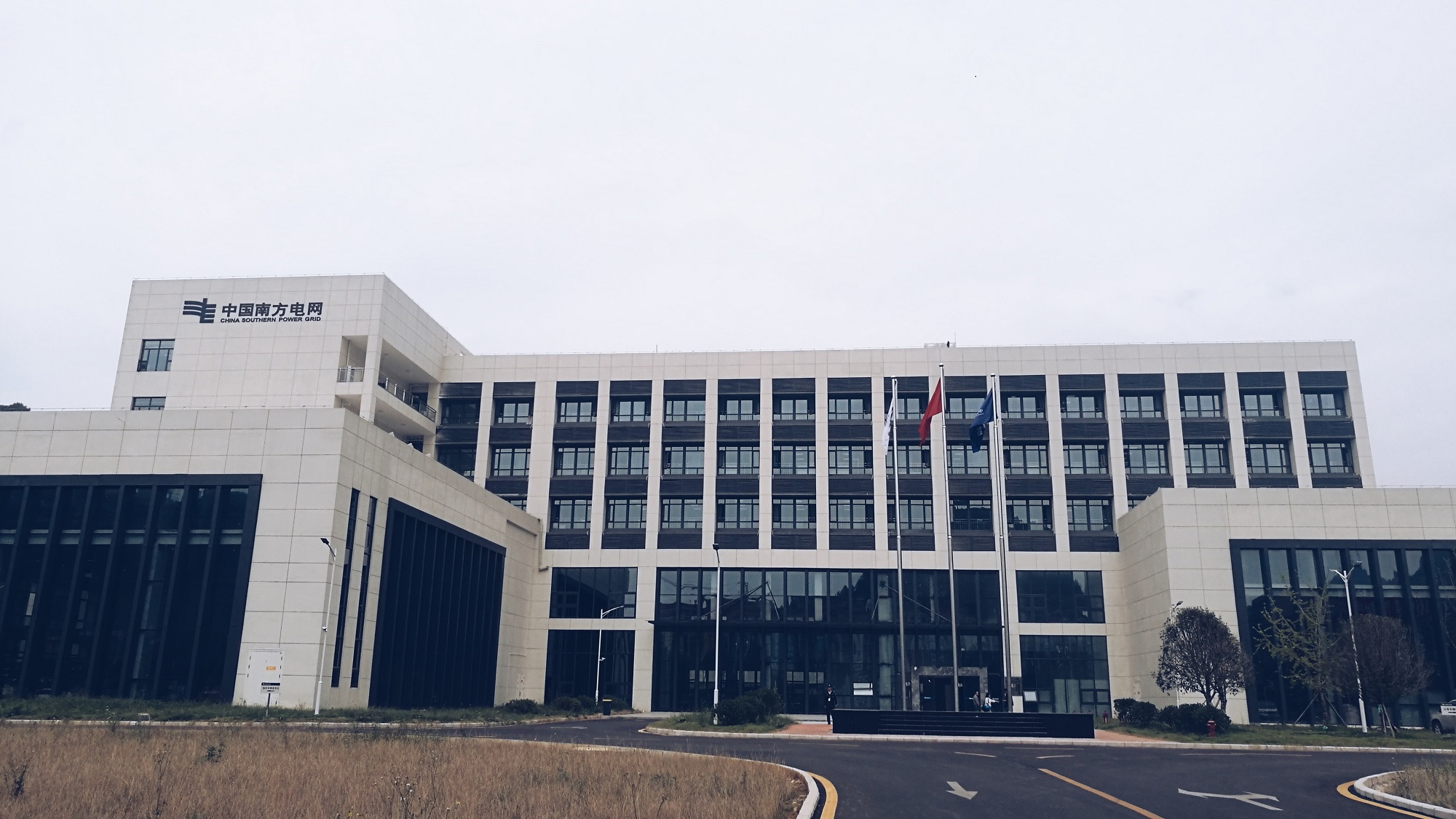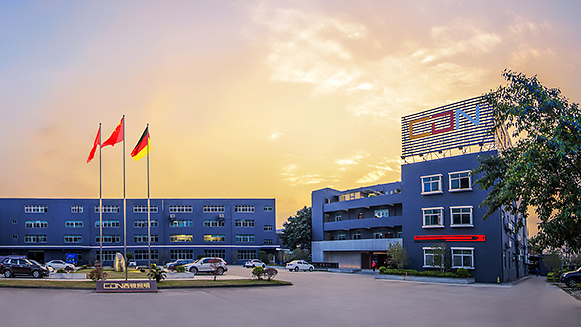Virtualization technology is still playing an important role in the IT infrastructure of the enterprise private cloud. At the same time, in order to further improve the application efficiency, more and more production environments are also gradually changing, from a virtual-device-oriented architecture to such a cloud native architecture based on dockers and microservices. In this process, how to effectively support various cloud host and microservice applications has posed a new challenge to the private cloud data center of an enterprise.

The SandStone private cloud storage solution has given full play to cloud adaptation, openness and other advantages of SandStone USP (unified storage platform), able to support various complex workloads and also support VMware, Citrix, OpenStack and other virtualization cloud platforms as well as all container cloud platforms certified by Kubernetes, such as Rancher, Openshift and Kubernetes.
Through the SandStone USP, users can quickly build a unified storage resource pool compatible with all mainstream virtualization platforms and container microservice platforms. In the face of various virtual device and microservice needs, the pooled storage platform can provide a reliable storage infrastructure for large-scale cloud environment, and help users liberate from the complex infrastructure operation and maintenance and focus on the business itself running on the private cloud.

Resource integration connects enterprise information islands
A storage resource pool can simultaneously support multiple protocol interfaces such as iSCSI, RBD, NFS, CIFS and FTP, also support a wide range of virtualization platforms and database applications, and satisfy the requirements for block, file and object storage in cloud infrastructure, development testing and other scenarios;
Support multi-dimensional distribution of storage pool resources and online migration of data across pools, enable managers to complete lifecycle management of resources, achieve online migration of data between different cloud platforms, and let data shared to improve resource utilization;
Support such functions as storage volume QoS setting and volume performance priority online adjustment, flexibly configure the storage volumes of each resource pool according to the service quality requirements, and meet the requirements of various businesses after released for reasonable optimization of resource allocation.Open, compatible and adaptable to a variety of private cloud platforms
The SandStone USP adopts a software-defined architecture able to support general x86 server , so customers can make choices as required to avoid hardware locking and also facilitate the utilization of the existing equipment;
Complete VMware VAAI certification and Citrix Ready certification, it is compatible with the official versions of major virtualization platforms, able to use the open interface provided by the virtualization platform to optimize the performance of I/O access and realize vertical optimization. Compared with standard integration, it has greatly improved the performance of virtual device access to storage;
Complete OpenStack Cinder certification, able to support the block storage infrastructure for Cinder, Glance and Nova, while satisfying the requirements of OpenStack for object storage;
Complete CSI interface certification of container platform and is compatible with Kubernetes ecology. Besides, it can provide dockers with block and file storage resources for various stateful or stateless applications.Intelligent management smoothes large-scale operation and maintenance
The wizard installation deployment and self-service capacity expansion has greatly enhanced usability and maintainability; management automation and visualization has greatly reduced users’ operation and maintenance costs
It has optimized reliability management for large-scale clusters, with patented technology used to detect and repair hard disk errors, reduce disk failure rate and save investment on hardware;
The cloud management function focusing on storage resources can visually show the corresponding relationship among the cloud hosts, container operation instances and storage resources. Its performance monitoring can help managers quickly locate storage errors of virtual devices or microservice instances.

Container cloud platform
Compatible with various container orchestration platforms, it can provide container persistence data services, various unstructured data storage services and container image warehouse services through various interfaces to meet all kinds of needs of the cloud native environment for storage.
Multiple application hybrid scenario
The normalized management of back-end storage resources for various bare metal, virtualization and microservice business scenarios, such as container, file sharing, databases, virtualization, network disks, backup services and archiving requirements, makes users pay more attention to the value of the application itself and the relationship between them instead of the storage.
Development testing cloud
Rich functions, flexible storage resource allocation and optimization methods can help users quickly and easily release, migrate and test functions, and quickly put them to the market; show the unique advantages of products, and gain the competitive advantage over competitors. Efficient performance and more convenient data migration strategy as well as flexible storage resource allocation and optimization mode can enable data flexible flow throughout construction, testing, deployment, update, operation and maintenance of the development testing cloud, help customers make full use of the advantages of the virtualization and microservice platform, and practice the concepts of DevOps and CI/CD.
Virtual desktop infrastructure (VDI)
For the virtualization hypervisor and the vertical optimization of the operating system, such as VMware VAAI, Windows ODX and other acceleration functions, it can greatly improve the performance of data copy and big file transmission in the virtual devices of terminal clients; moreover, based on the virtual device master volume locking and other functions in the smart caching technology of SandStone, it can eliminate the traditional start-up storm in the VDI scenario and thus greatly improve the customer experience of the VDI scenario.








